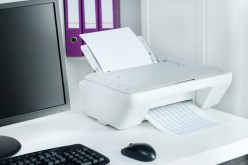The Role of Fuel Dispensing Nozzles in Preventing Spills and Contamination
Fuel dispensing nozzles are a crucial component of any fuel station or refueling system. These specially designed nozzles play a vital role in preventing spills, minimizing contamination, and ensuring the safe and efficient transfer of fuel. In this article, we will explore the various features and functions of fuel dispensing nozzles and their importance in maintaining a clean and hazard-free refueling process.
Spill Prevention
One of the primary functions of fuel dispensing nozzles is to prevent spills during the refueling process. Traditional fuel nozzles were often prone to spillage due to their design limitations. However, modern fuel dispensing nozzles are equipped with advanced features that significantly reduce the risk of spills.
Firstly, these nozzles incorporate an automatic shut-off mechanism that stops the flow of fuel when the tank reaches its maximum capacity. This prevents overfilling and minimizes the chances of spills caused by human error or negligence.
Additionally, many fuel dispensing nozzles feature a spill-proof spout design. This design includes a special valve that closes when not in use, preventing any leakage or spillage during storage or transportation. The spill-proof spout also helps maintain a clean environment by preventing any residual drips after refueling.
Contamination Minimization
Fuel contamination can have severe consequences for both vehicles and the environment. Fuel dispensing nozzles play a crucial role in minimizing contamination during the refueling process.
Modern fuel dispensing nozzles are equipped with filters that trap debris, sediment, and other contaminants present in the fuel before it enters the vehicle’s tank. These filters ensure that only clean and pure fuel flows into vehicles, reducing the risk of engine damage or malfunction caused by contaminated fuel.
Moreover, some advanced fuel dispensing nozzles feature a vapor recovery system. This system captures the fuel vapors that are released during refueling and prevents them from escaping into the atmosphere. By minimizing vapor emissions, these nozzles contribute to reducing air pollution and protecting the environment.
Safety Measures
Fuel dispensing nozzles are designed with various safety measures to ensure the well-being of both users and the surrounding environment.
To prevent accidental fuel spills, many nozzles include a flow control device that allows users to adjust the fuel flow rate according to their needs. This feature helps prevent fuel overflow or splashing during refueling, reducing the risk of fire hazards.
Furthermore, fuel dispensing nozzles often incorporate grounding wires or cables. These wires help dissipate any static electricity that may accumulate during the refueling process, preventing potential ignition sources and minimizing the risk of explosions.
Ease of Use and Compatibility
In addition to their spill prevention, contamination minimization, and safety features, modern fuel dispensing nozzles are designed for ease of use and compatibility with various vehicles.
Many nozzles have ergonomic handles with comfortable grips that allow users to hold them securely during refueling. The handles also incorporate trigger mechanisms for easy control of fuel flow.
Moreover, these nozzles come in different sizes and designs to accommodate different vehicle types and fueling systems. Whether it’s a small passenger car or a large commercial truck, there is a fuel dispensing nozzle suitable for every vehicle’s needs.
In conclusion, fuel dispensing nozzles play a crucial role in preventing spills and contamination during the refueling process. With their advanced features such as automatic shut-off mechanisms, spill-proof spouts, filters, vapor recovery systems, and safety measures like flow control devices and grounding wires, these nozzles ensure safe and efficient fuel transfer while minimizing environmental impact. Investing in high-quality fuel dispensing nozzles is essential for any fuel station or refueling system to maintain a clean and hazard-free refueling process.
This text was generated using a large language model, and select text has been reviewed and moderated for purposes such as readability.






